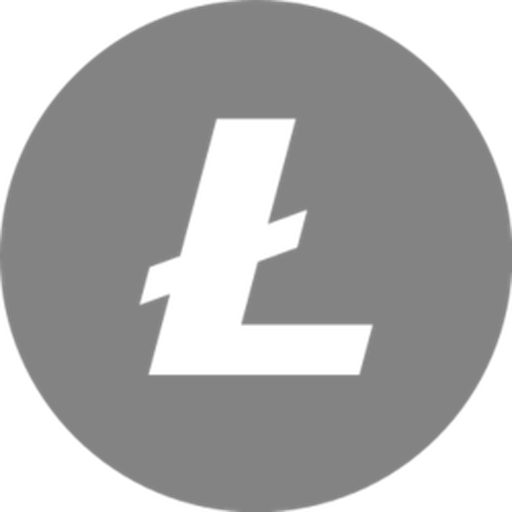Polkadot vs Litecoin – Price, Market Cap & Performance Compared
Which coin performs better – Polkadot or Litecoin?
We compare the current price (3.39 $ vs 87.37 $), market cap (5 168 293 461 vs 6 646 551 418) and all-time high (54.98 vs 410.26).
Find out which one stands out right now!
Polkadot is currently trading at 3.39 $, while Litecoin stands at 87.37 $. These cryptocurrencies differ not only in price but also in market presence.
The market cap of Polkadot is around 5 168 293 461, and Litecoin has about 6 646 551 418. Their respective all-time highs are 54.98 for Polkadot and 410.26 for Litecoin.
Daily trading volume and the 24h price change (1.17041 % vs -0.21754 %) also offer key insights.
Compare all metrics now and see which coin fits your investment strategy best!
Polkadot
Polkadot is a next-generation blockchain protocol that unites an entire network of purpose-built blockchains, allowing them to operate seamlessly together at scale. It is designed to facilitate communication and interoperability between different blockchains, enhancing their functionality without compromising their individual security. By enabling a truly decentralized web where users control their data and identity, Polkadot aims to transform the way we interact with digital assets and smart contracts.
more informationLitecoin
Litecoin is often considered the silver to Bitcoin's gold, providing a faster transaction time and a different hashing algorithm to support more efficient mining. It was created by Charlie Lee in 2011 as a lighter version of Bitcoin, aiming to improve upon several perceived shortcomings. With its robust network and high liquidity, Litecoin continues to be a popular choice for traders and investors seeking a reliable alternative in the cryptocurrency space.
more information

|

|
|
|
|
General Information |
|
|---|---|
|
Title
Polkadot
|
Title
Litecoin
|
|
Symbol
dot
|
Symbol
ltc
|
|
Whitepaper
|
Whitepaper
-
|
|
Website
|
Website
|
|
Community
-
|
Community
|
|
Last Updated
2025-07-06 23:29
|
Last Updated
2025-07-06 23:29
|
Price Data |
|
|---|---|
|
Current Price $
3.39 $
|
Current Price $
87.37 $
|
|
High 24h
3.44 $
|
High 24h
88.32 $
|
|
Low 24h
3.33 $
|
Low 24h
86.58 $
|
|
Price Change 24h
0.03927 $
|
Price Change 24h
-0.19049 $
|
|
Price Change % 24h
1.17041 %
|
Price Change % 24h
-0.21754 %
|
Market Data |
|
|---|---|
|
Market Cap
5 168 293 461
|
Market Cap
6 646 551 418
|
|
Total Volume
149 791 039
|
Total Volume
242 934 581
|
|
Market Cap Change 24h
60 263 729
|
Market Cap Change 24h
-17 666 589
|
|
Market Cap Change % 24h
1.17978 %
|
Market Cap Change % 24h
-0.26510 %
|
|
Return on Investment (ROI)
-
|
Return on Investment (ROI)
-
|
Supply and Availability |
|
|---|---|
|
Circulating Supply
1 522 267 060
|
Circulating Supply
76 040 008
|
|
Total Supply
1 522 267 060
|
Total Supply
76 046 202
|
|
Max Supply
-
|
Max Supply
84 000 000
|
Historical Data |
|
|---|---|
|
All Time High (ATH)
54.98
|
All Time High (ATH)
410.26
|
|
ATH Change %
-93.81168 %
|
ATH Change %
-78.68274 %
|
|
ATH Date
2021-11-04 14:10
|
ATH Date
2021-05-10 03:13
|
|
All Time Low (ATL)
2.7
|
All Time Low (ATL)
1.15
|
|
ATL Change %
26.13357 %
|
ATL Change %
7 512.54456 %
|
|
ATL Date
2020-08-20 05:48
|
ATL Date
2015-01-14 00:00
|
Polkadot
What Is Polkadot?
Polkadot, represented by the symbol DOT, is a unique blockchain framework that stands out in the vast landscape of cryptocurrencies. Designed to enable different blockchains to interoperate, Polkadot aims to create an internet where our data is our own and isn't stored on a centralized server.
Historical Development of Polkadot
Since its inception, Polkadot has been at the forefront of driving innovation in blockchain interoperability. Launched by Dr. Gavin Wood, one of the co-founders of Ethereum, Polkadot was created to address some of the significant limitations existing in the blockchain ecosystem, particularly issues related to scalability and isolated blockchains.
The DOT token, as a native token of the Polkadot network, experienced a remarkable early trajectory, reaching its all-time high of $54.98 on November 4, 2021. However, it has also faced substantial downturns, reflective of the volatile nature of the cryptocurrency market. Currently, DOT is significantly below its ATH, demonstrating the potential for future gains but also underscoring the risk involved.
A Deep Dive into Polkadot's Advantages
Polkadot offers several key advantages that make it a notable project in the crypto space. Firstly, its unique multi-chain feature, often referred to as a "parachain" technology, allows for unprecedented scalability. This means multiple transactions can be processed in parallel across several chains, avoiding bottlenecks experienced in traditional standalone blockchain networks.
Secondly, Polkadot's shared security model allows each blockchain or parachain to leverage the collective security of the entire network, without needing to implement its own security protocols. This not only reduces the resource burden on individual projects but also enhances overall network security.
Challenges and Disadvantages
Despite its innovative framework, Polkadot is not without its challenges. One major issue is its complexity; the architecture of multiple parachains and relay chains can be difficult for developers to navigate. Moreover, Polkadot is still relatively young compared to other established blockchain networks like Bitcoin and Ethereum, leading to uncertainty regarding long-term viability and adoption.
Additionally, the market volatility, as demonstrated by DOT reaching 92% below its all-time high, may deter both investors and users interested in stability and consistent growth.
Future Outlook for Polkadot
The future of Polkadot appears promising as it continues to enhance its ecosystem through upgrades and the development of new parachains. With the growing trend toward a decentralized web (Web3), Polkadot's foundational capability for cross-chain communication could become crucial in realizing this vision.
Furthermore, ongoing partnerships and integrations contribute to Polkadot's potential adoption across various industries, which could foster sustained interest and involvement from developers and enterprises alike.
While the current market conditions show that DOT’s price remains far below its peak, the project’s innovative approach to blockchain technology and potential for wide-spread interoperability offer compelling reasons to remain optimistic about its long-term prospects.
Litecoin
The History and Evolution of Litecoin
Launched in October 2011 by Charlie Lee, a former Google engineer, Litecoin has established itself as one of the oldest and most stable cryptocurrencies in the market. Often referred to as the silver to Bitcoin's gold, Litecoin was designed to improve upon Bitcoin's limitations. Over the years, its technical advancements and strong community support have contributed to its success and longevity.
Technical Attributes: Speed and Efficiency
Litecoin offers several improvements over Bitcoin, most notably its faster transaction times and a different hashing algorithm. With a block time of just 2.5 minutes, compared to Bitcoin's 10 minutes, Litecoin processes transactions much quicker, making it more suitable for everyday transactions. Additionally, Litecoin uses the Scrypt hashing algorithm, which allows for a more decentralized mining process since it is more accessible for individual miners.
Advantages of Litecoin
One significant advantage of Litecoin is its robust infrastructure, which ensures quick and low-cost transactions. Its long history and the active development team have also contributed to its security and resilience in the ever-changing crypto market. Furthermore, Litecoin has a maximum supply of 84 million coins, which makes it four times the supply of Bitcoin, potentially allowing for more inclusive distribution.
Challenges and Limitations
Despite its strengths, Litecoin faces competition from newer cryptocurrencies that offer more advanced features or targeted niche markets. It has also struggled with branding and recognition compared to some of its more famous counterparts like Bitcoin and Ethereum. Another challenge is its correlation to Bitcoin's price movements, often experiencing similar market trends, which means it doesn't always provide the diversification investors might seek.
Past Performance: A Roller Coaster Ride
Litecoin's price history is quite volatile, with its all-time high reaching $410.26 in May 2021. Since then, it has seen significant price corrections, currently trading at around $69.88. However, its enduring presence since its inception highlights a certain level of confidence and continued interest from the cryptocurrency community.
Future Prospects
The future of Litecoin will depend on market conditions and technological developments. Given its stability and established infrastructure, it is likely to continue being a relevant player in the cryptocurrency space. Initiatives such as the MimbleWimble protocol, which aims to enhance privacy and scalability, could pave the way for further adoption and investment interest.
As with any cryptocurrency investment, potential investors should conduct thorough research and consider their risk tolerance before investing in Litecoin. Despite the challenges it faces, Litecoin's technological robustness and solid track record make it a noteworthy choice in the crypto ecosystem.

